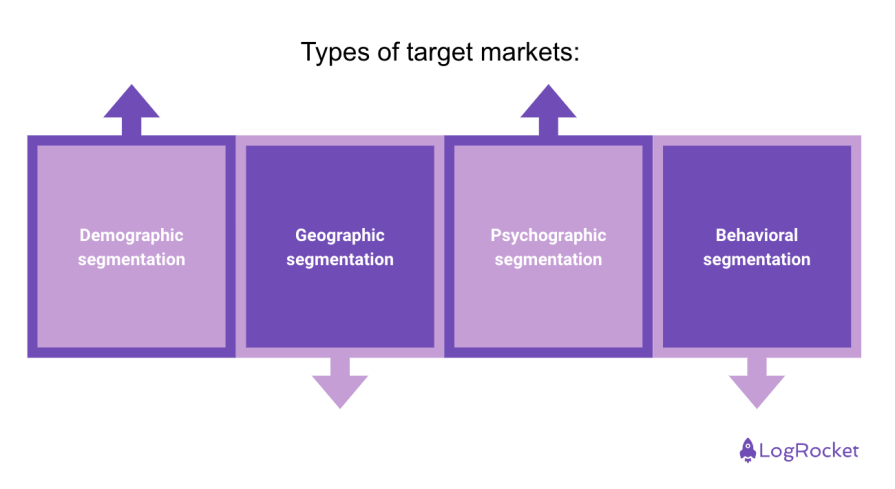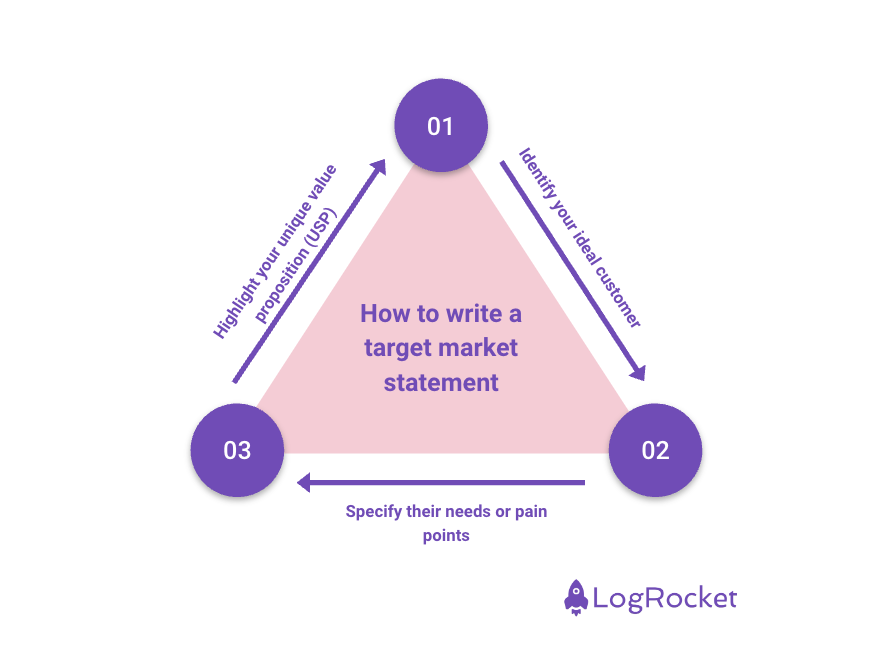As a product manager, it’s crucial that you understand your target market so that you can tailor your growth strategy and development efforts towards a particular use case. You don’t want to be fumbling around in the dark when it comes to understanding who you build products for.

Consumers all have different needs and preferences and it’s rare that a single product speaks to an entire market. Because of that, you want to identify a niche that offers you enough potential and that you feel confident about winning. This’ll help you avoid creating a product so generic that it fails to cut through the noise.
In this article, you’ll learn what a target market is, the different ways you can segment one, and how to go about developing a target market strategy.
A target market is a specific group of people you want to sell your products or services to. Think of it like picking the perfect audience for your movie. Your goal is to make sure the right people enjoy it and want to see more of it. The same rule applies to businesses.
Having a target market helps you:
Target markets can be divided into different types based on certain characteristics. These characteristics are categorized using market segmentation. Segmentation helps you understand and target your potential customers more effectively:

The process of dividing the market based on demographic factors such as age, gender, income, education, and family size. It’s straightforward and often serves as the starting point for defining a target market.
When you target customers based on their location, such as country, city, or region. You can tailor your products, advertising, and sales efforts to fit the specific user needs of each location.
With this approach, you divide the market based on personality traits. User values, interests, lifestyles, and attitudes are the main factors. It gives you a deeper understanding of what motivates consumer behaviors and preferences.
When the market is divided based on consumer behavior, including usage rate, brand loyalty, benefits sought, and readiness to purchase.
Once you identify your target, it not only affects your marketing strategies, but also affects your product development, pricing, and distribution channels. Therefore, finding the right target market is a multifaceted process that requires thoughtful analysis and strategic planning.
Several factors need to be considered before landing on a conclusion:
Once the target market is defined, the next step is to craft a target market statement.
A target market statement is a concise description of your ideal user base. It clearly defines the user that your product or service is designed for and serves as a guiding light for your marketing strategies, ensuring that your efforts are focused and aligned with the needs of your most valuable customers:

Start by pinpointing the specific group of people you aim to serve. Outline their demographics (age, gender, income level, education, etc.), geographic location, psychographics (lifestyle, values, interests), and behaviors (purchasing habits, product usage).
Clearly articulate the primary needs and challenges the users are facing. You can also detail the problems that your product or service addresses. This ensures your statement is focused on solutions and benefits.
What makes your offering unique and why it’s the best solution for your target market? This could be a unique feature, superior quality, better price point, or special service.
A sample target statement for a food app could be:
“Our service is designed for busy urban professionals between the ages of 25 and 40, who struggle to find the time for grocery shopping and meal preparation. Our meal kit delivery service offers healthy, easy-to-prepare meals, saving them time while supporting their wellness goals. Unlike other meal services, we focus on locally sourced ingredients and cater to a range of dietary preferences, making healthy eating accessible and convenient.”
With the target market statement ready, you can shift your focus to target market analysis.
Conducting a target market analysis is a critical process for every product. It helps you understand how to best serve the end user. This analysis forms the basis of your marketing strategies, product development, and overall business trajectory.
The following steps can serve as a good starting point:
A well-rounded analysis helps shape the target market strategies eventually leading to product growth.
Effective target market strategies are the driving force of success for software products. With effective strategies, companies can drive growth and establish a strong market presence. Let’s discuss a few examples of software companies that have excelled with the right strategic planning.
Trello targeted teams and individuals looking for a flexible project management tool. By focusing on the agile methodology (popular among software developers and startups), Trello designed its platform to be intuitive, with a visual board layout. It appealed to its target users’ preferences.
This approach helped Trello attract a loyal user base before expanding to a broader audience.
GitHub focused on software developers looking for a powerful collaboration and code management tool. Its USP was features like version control, issue tracking, and a community platform. This targeted strategy helped GitHub become an essential tool in the developer workflow.
Zoom, Slack, and Canva also used a similar framework and became gigantic. These examples showcase how understanding and focusing on a specific target market ensures success. On a basic level, each company identified a niche with specific needs and designed its product to meet those needs
Targeting the right market can become a complex process very quickly. There are certain pitfalls that need to be avoided. Some of these complications arise due to bad planning in the initial stages of research, others are an expected part of the process:
With the right approach and guidelines mentioned earlier, these obstacles can be overcome. The key is to consider the influential factors in every phase of the process.
Identifying and understanding your target market is a fundamental aspect of product management. It directly influences the success or failure of your product. Here are the key takeaways from our detailed exploration:
The process of identifying your target market should not be seen as a one-time task. Think of it as an ongoing effort that evolves with your product and the marketplace. Good luck!
Featured image source: IconScout

LogRocket identifies friction points in the user experience so you can make informed decisions about product and design changes that must happen to hit your goals.
With LogRocket, you can understand the scope of the issues affecting your product and prioritize the changes that need to be made. LogRocket simplifies workflows by allowing Engineering, Product, UX, and Design teams to work from the same data as you, eliminating any confusion about what needs to be done.
Get your teams on the same page — try LogRocket today.

A practical five minute revenue estimation method to help product managers compare ideas, drop low impact features, and prioritize smarter.

A practical guide for PMs who want to stop being bottlenecks, delegate smarter, and lead teams effectively with a clear ownership framework.

Stop letting unreliable data block features. Treat data as inventory to track quality, ownership, and ship with confidence.

Learn why slide decks slow teams down and explore better tools like whiteboards, PRDs, and prototypes to improve collaboration and alignment.